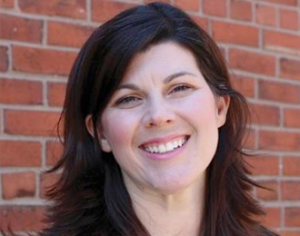Nurse Fatigue: First Phase of Nurse Burnout
by Kourtney Govro
In a recent conversation I had with a hospital executive, they said, “It is not that another surge or outbreak or another challenge like that won’t occur – we know it will. We also know we are better prepared to handle it when it comes. However, the real issue is tied to now – how do we handle the issues that were created that lead to massive fatigue and burnout.”
According to the National Council of State Boards of Nursing, the median age of RNs today is 52, with more than one-fifth planning to retire within the next 5 years.1. If you combine that with an aging population in which, according to the CDC, 60% currently have a chronic condition,2 you see the need for nurses will continue to grow just as more and more retire. Will we be able to educate new nurses fast enough to fill the vacancies? At minimum, nurses will need to work harder to fill gaps in knowledge if not gaps in staff, which will lead to a growing problem of nurse fatigue.
Fatigue is defined as physical or mental weariness; it occurs when a person’s mental and physical abilities are impaired by overwork or over stimulation. “Impaired” implies one can still accomplish the task, but with higher risk of error.
One aspect of fatigue that a caregiver will experience is alarm fatigue. Health systems and technology providers have discussed it since 2008. It occurs when too many alarms, alerts, and notifications are delivered to or around a care team member. Alarm fatigue often leads to a caregiver’s inability to discern which alarm he or she should respond to, or, in some cases, even hear or know there is a specific alarm.
Alarm fatigue has been an ongoing challenge the technology industry has attempted to address through distribution, automation, and algorithms, yet we still have a long way to go before it is solved. In workflow design, we can create default settings that vary based on the needs of admitted patients. Through set processes, we can encourage daily replacement of the leads. With technology, we can delay delivery of alarms by watching and waiting or even by applying more advanced logic. Even with those adjustments, the challenge will still remain that caregivers are inundated with needs, requests, alerts, alarms, and disruptions – the cumulation of which are bound to cause nurse fatigue.
To help ease the burden on nurses, here is what we encourage you to discuss with your clinical teams:
- Define “requests” from patients differently than alarms. We have found that patients on the mend often have more “concierge-level” requests: they are more mobile, they are checking on when they get to go home, and some just get lonely. Recognizing these requests takes action, time, and energy. The requests need to be measured and monitored by leadership to identify if a single caregiver is getting too overwhelmed. Set goals and thresholds to discuss at team huddles.
- Identify if bed alarms are being assigned and distributed properly. Yes, every single one is important, but sometimes the way the system is designed to distribute those alarms can create a hindrance to caregivers.
- Identify if the toilet cord is being used as a call-out request or as a true emergency.
While these suggestions may involve a combination of in-depth policy and practice discussions, they can really impact your overall alarm quantities and help reduce the instances of alarm fatigue.
Critical Alert is always here to help. Reach out today to talk to one of our clinical consultants.
Kourtney Govro
Strategic Advisor
Kourtney Govro has over 20 years of experience in the nurse call business. At just 6 years old she was introduced to the idea when her father became a nurse call distributor. Since then, her love for transforming the nurse call industry has continued to grow. Leading her to start her own successful company, Sphere3, a consulting company that supported hospitals with decisions around leveraging technology to transform the care environment. Critical Alert acquired Sphere3 in 2019 and Kourtney joined the team as a Strategic Advisor.


